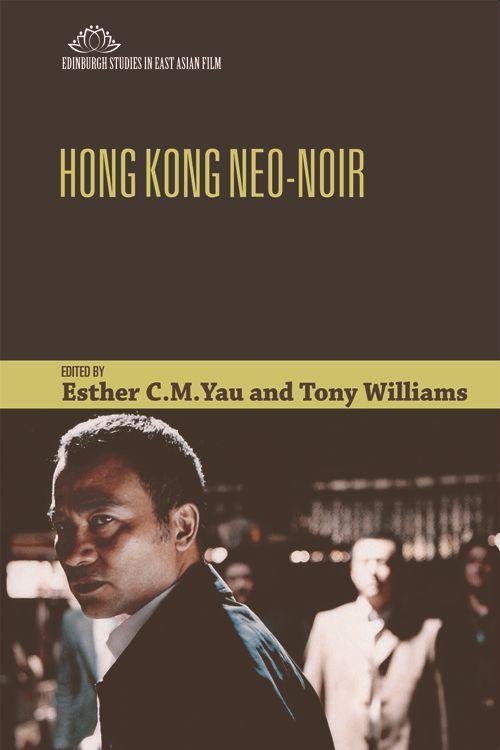
Zustellung: Do, 12.06. - Di, 17.06.
Versand in 2 Wochen
VersandkostenfreiBestellen & in Filiale abholen:
'An indispensable study of a neglected genre, this anthology traces the cultural history of Hong Kong's noir cinema, identifies key figures in the genre's development, and furnishes incisive analyses of essential neo-noir films. Collectively, the book's chapters capture the artfulness, ingenuity and exuberance of this remarkable cinematic tradition.'
Gary Bettinson, University of Lancaster
The first comprehensive collection on Hong Kong neo-noir cinema, this book examines the way Hong Kong has developed its own unique version of noir since the late 1940s, while drawing upon and enriching global neo-noir cinemas. With a range of contributions from established and emerging scholars, this book illuminates the origins of Hong Kong neo-noir, its styles and contemporary manifestations, and its connection to mainland China before and after the 1997 Handover.
Case studies include classics such as The Wild, Wild Rose (1960) and more recent films like Full Alert (1997), Exiled (2007) and Shinjuku Incident (2008). It provides a fresh look at the careers of iconic figures Johnnie To, Jackie Chan and Fruit Chan. By examining the films of émigré Shanghai directors, the cool women killers, the hybrids and noir cityscapes, Hong Kong Neo-Noir explores the complex connections between a vibrant cinema and global noir.
Esther C. M. Yau teaches cinema studies in the School of Humanities at the University of Hong Kong. Tony Williams is Professor and Area Head of Film Studies, English Department, Southern Illinois University at Carbondale.
Cover image: Election, Johnnie To, 2005 © China Star Ent/The Kobal Collection
Cover design:
[EUP logo]
edinburghuniversitypress.com
ISBN 978-1-4744-1266-7
Barcode
Gary Bettinson, University of Lancaster
The first comprehensive collection on Hong Kong neo-noir cinema, this book examines the way Hong Kong has developed its own unique version of noir since the late 1940s, while drawing upon and enriching global neo-noir cinemas. With a range of contributions from established and emerging scholars, this book illuminates the origins of Hong Kong neo-noir, its styles and contemporary manifestations, and its connection to mainland China before and after the 1997 Handover.
Case studies include classics such as The Wild, Wild Rose (1960) and more recent films like Full Alert (1997), Exiled (2007) and Shinjuku Incident (2008). It provides a fresh look at the careers of iconic figures Johnnie To, Jackie Chan and Fruit Chan. By examining the films of émigré Shanghai directors, the cool women killers, the hybrids and noir cityscapes, Hong Kong Neo-Noir explores the complex connections between a vibrant cinema and global noir.
Esther C. M. Yau teaches cinema studies in the School of Humanities at the University of Hong Kong. Tony Williams is Professor and Area Head of Film Studies, English Department, Southern Illinois University at Carbondale.
Cover image: Election, Johnnie To, 2005 © China Star Ent/The Kobal Collection
Cover design:
[EUP logo]
edinburghuniversitypress.com
ISBN 978-1-4744-1266-7
Barcode
Inhaltsverzeichnis
Acknowledgements
Notes on Contributors
Introduction: Hong Kong Neo-Noir, Esther C. M. Yau and Tony Williams
SECTION A: SEEDS OF NOIR IN HONG KONG CINEMA
Chapter 1: 'A Rose by Any Other Name': Wong Tin-lam's The Wild, Wild Rose as Melodrama Musical Noir Hybrid, Lisa Odham Stokes
Chapter 2: Black & Red: Post-war Hong Kong Noir and Its Interrelation with Progressive Cinema, 1947-1957, Law Kar
Chapter 3: Sword, Fist, or Gun? The 1970s Origins of Contemporary Hong Kong Noir, Kristof Van den Troost
SECTION B: NEO-NOIR FILMS IN CLOSE-UP
Chapter 4: Doubled Indemnity: Fruit Chan and the Meta-Fictions of Hong Kong Neo-Noir, Adam Bingham
Chapter 5: Running on Karma: Hong Kong Noir and the Political Unconscious, Gina Marchetti
Chapter 6: Beyond Hypothermia: Cool Women Killers in Hong Kong Cinema, David Desser
Chapter 7: Tech-Noir: A Subgenre may not exist in Hong Kong Science Fiction Films, Kwai-Cheung Lo
SECTION C: COSMOPOLITAN CITYSPACE AND NEO-NOIR
Chapter 8: Location Filmmaking and the Hong Kong Crime Film: Anatomy of a Scene, Julian Stringer
Chapter 9: Running out of Time, Hard-Boiled, and 24-Hour Cityspace, Kenneth E. Hall
Chapter 10: Exiled in Macau: Hong Kong Neo-Noir and Paradoxical Lyricism, Jinhee Choi
Chapter 11: The Tentacles of History: Shinjuku Incident's Return of the Repressed, Tony Williams
Bibliography
Filmography
Notes on Contributors
Introduction: Hong Kong Neo-Noir, Esther C. M. Yau and Tony Williams
SECTION A: SEEDS OF NOIR IN HONG KONG CINEMA
Chapter 1: 'A Rose by Any Other Name': Wong Tin-lam's The Wild, Wild Rose as Melodrama Musical Noir Hybrid, Lisa Odham Stokes
Chapter 2: Black & Red: Post-war Hong Kong Noir and Its Interrelation with Progressive Cinema, 1947-1957, Law Kar
Chapter 3: Sword, Fist, or Gun? The 1970s Origins of Contemporary Hong Kong Noir, Kristof Van den Troost
SECTION B: NEO-NOIR FILMS IN CLOSE-UP
Chapter 4: Doubled Indemnity: Fruit Chan and the Meta-Fictions of Hong Kong Neo-Noir, Adam Bingham
Chapter 5: Running on Karma: Hong Kong Noir and the Political Unconscious, Gina Marchetti
Chapter 6: Beyond Hypothermia: Cool Women Killers in Hong Kong Cinema, David Desser
Chapter 7: Tech-Noir: A Subgenre may not exist in Hong Kong Science Fiction Films, Kwai-Cheung Lo
SECTION C: COSMOPOLITAN CITYSPACE AND NEO-NOIR
Chapter 8: Location Filmmaking and the Hong Kong Crime Film: Anatomy of a Scene, Julian Stringer
Chapter 9: Running out of Time, Hard-Boiled, and 24-Hour Cityspace, Kenneth E. Hall
Chapter 10: Exiled in Macau: Hong Kong Neo-Noir and Paradoxical Lyricism, Jinhee Choi
Chapter 11: The Tentacles of History: Shinjuku Incident's Return of the Repressed, Tony Williams
Bibliography
Filmography
Produktdetails
Erscheinungsdatum
13. Dezember 2016
Sprache
englisch
Seitenanzahl
280
Herausgegeben von
Esther Yau, Tony Williams
Verlag/Hersteller
Produktart
gebunden
Gewicht
567 g
Größe (L/B/H)
241/159/22 mm
ISBN
9781474412667
Bewertungen
0 Bewertungen
Es wurden noch keine Bewertungen abgegeben. Schreiben Sie die erste Bewertung zu "Hong Kong Neo-Noir" und helfen Sie damit anderen bei der Kaufentscheidung.










